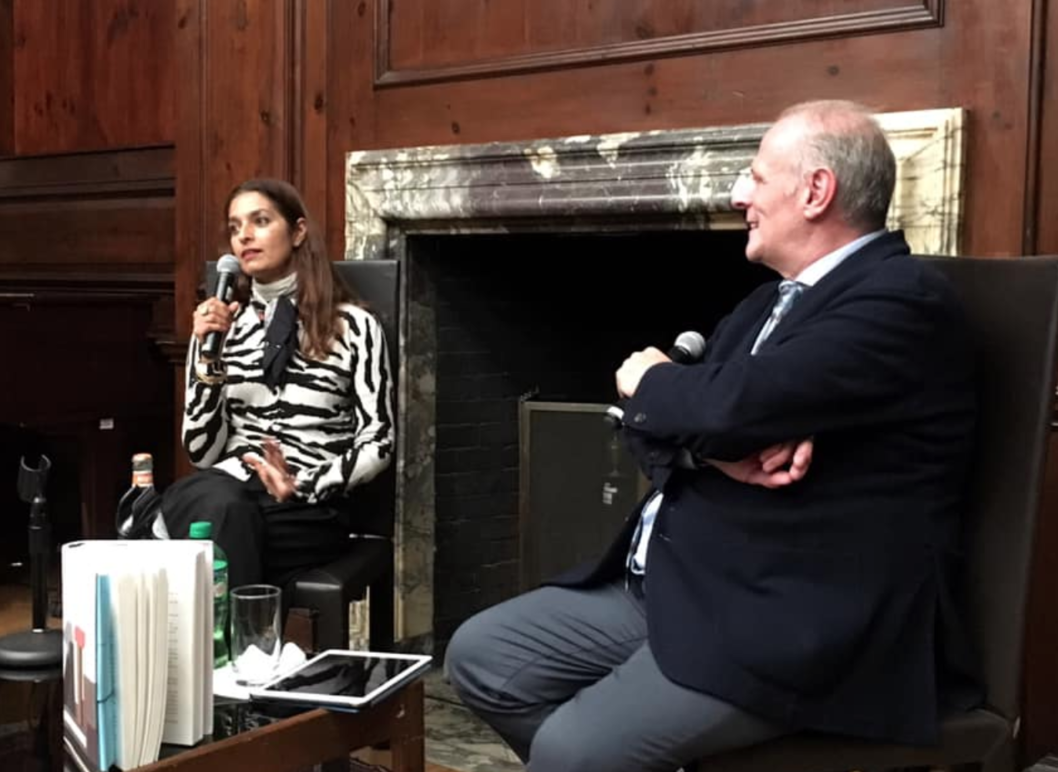Giving New Life to Classic Italian Short Stories
As Director of Casa Italiana Zerilli-Marimò, Stefano Albertini states in introducing her, the award-winning American author Jhumpa Lahiri has already done so much to promote the Italian language. Her latest project, titled “The Penguin Book of Italian Short Stories,” which she presented at the Italian Cultural Institute Thursday October 10th, is no exception. This anthology contains 40 short stories from 20th century Italian authors, ranging from the most famous, including Italo Calvino and Natalia Ginzburg, to others who are now virtually unknown, forgotten even by most Italians.
An endeavor that anyone familiar with the American publishing industry will tell you is not so easily carried out. “Only Jhumpa could get someone to publish Italian short stories in America,” comments Michael Moore, who along with others and Ms. Lahiri herself translated some of the stories in the collection. Many were translated in English for the first time for this occasion, other translations were redone, and others yet were kept.
The idea is to bring to the attention of English speakers the breadth and depth of the typically Italian tradition of “racconti” - short stories. In order to do this, over the course of three years, the author met with fellow writers and professors, compiling lists upon lists of Italian writers, then looking for their writings, which were not always easy to find. She recalls spending her Sundays going through the stacks of used books at the Porta Portese flea market in Rome. Engaging in a treasure hunt, sometimes finding first editions, fascinating objects which give a sense of the time they were produced in.
The fact that she had to hunt down some of the titles just goes to show how timely the publication of such a collection is. These stories and their authors are not only strangers to the American and broader English-reading public, they are also unfamiliar and inaccessible to the majority of Italians.
And, in fact, the author chose to publish the book in Italian as well. “I was warned about the negative reaction that some people might have to an outsider discussing Italian literature,” she comments, explaining how her publisher suggested she leave out her commentaries and footnotes in the Italian version.
But the more she thought about it, the more she became convinced that she should keep in all her explanations. “There are many assumptions about what anyone who is ‘Italian’ simply knows,” she says, “but I’m not so sure.” Who are these Italians? How do you determine what a true Italian is and inevitably knows?
What about people of Italian origin who grew up abroad? What about people who emigrated to Italy? What about people who aren’t Italian but know the language? And even amongst those who were born and lived in Italy their entire lives there are plenty who could still be unfamiliar with these texts. Short stories are seldom, with a few exceptions, taught in school. And many adults might not feel inclined to seek them out on their own.
Ms. Lahiri cites the example of an Italian friend of hers who was surprised by some of the authors she chose to include, he thought they were “old”, of the past, associated them with what his parents or grandparents read. “But they spoke to me and now they can speak to anyone all over the world,” she comments.
One of those stories is Goffredo Parise’s Melancholy (or “Melanconia”), originally published in 1978 and translated by Jhumpa Lahiri herself, who considers it a “story about wanting to belong.” Though it is set in the context of a summer colony for poor children in post-war Italy, something most of us cannot really identify with, it successfully conjures a highly relatable feeling in just a few pages.
The author did preface the Italian version with an “avvertenza,” a warning, in which she states that the book is for everyone who can read in Italian and wants to read these authors in their original language. In maintaining all the explanations, she sends the message that Italian is not a closed language, reserved for a certain type of Italian who attended “liceo classico” and had a specific cultural upbringing.
And she regards the fact that she was invited to present the book to Italian President Sergio Mattarella as a sign that Italy is a curious and receptive culture, open to outside perspectives.
In both its Italian and English version, the book is an apetizer, the perfect jumping off point to delve into the rich and varied world of Italian short stories. “It’s not trying to answer anyone’s expectations but my own,” the author says, explaining that she was trying to create a new and surprising anthology, made so that everyone would find in it something they did not know.







































i-Italy
Facebook
Google+
This work may not be reproduced, in whole or in part, without prior written permission.
Questo lavoro non può essere riprodotto, in tutto o in parte, senza permesso scritto.